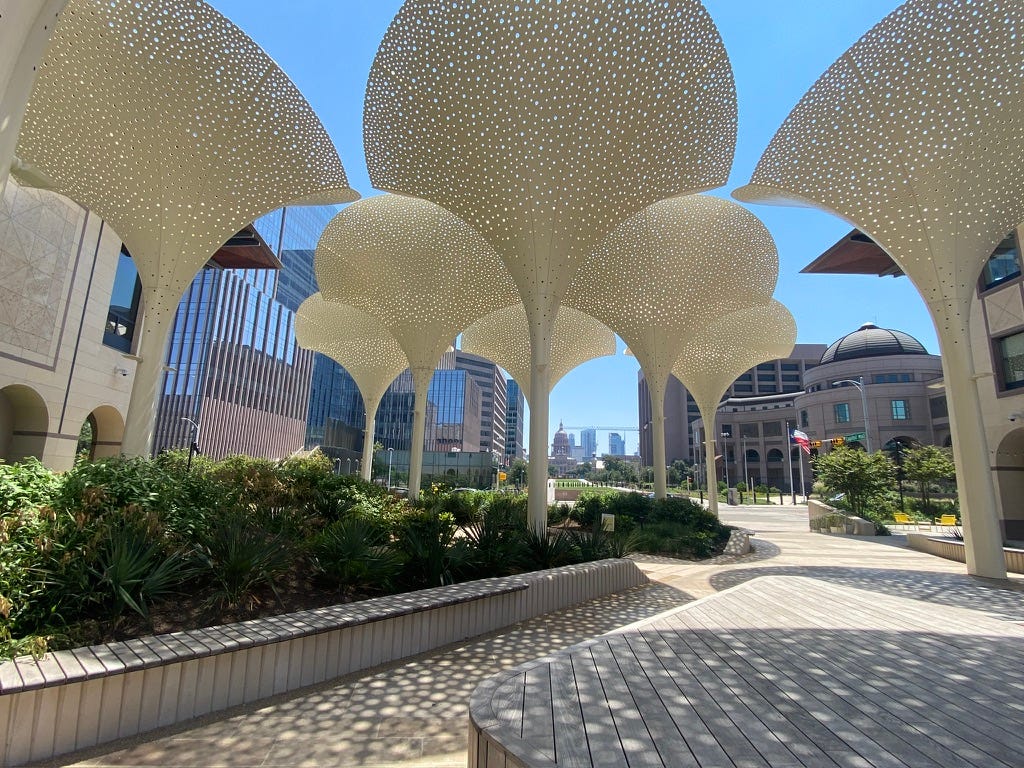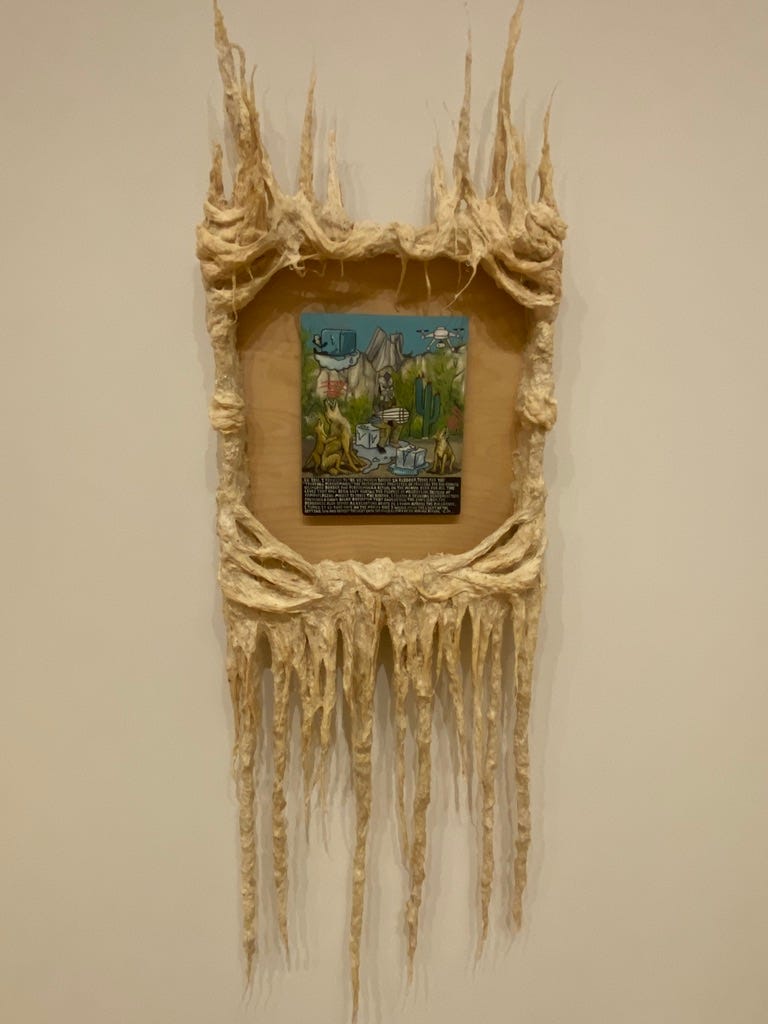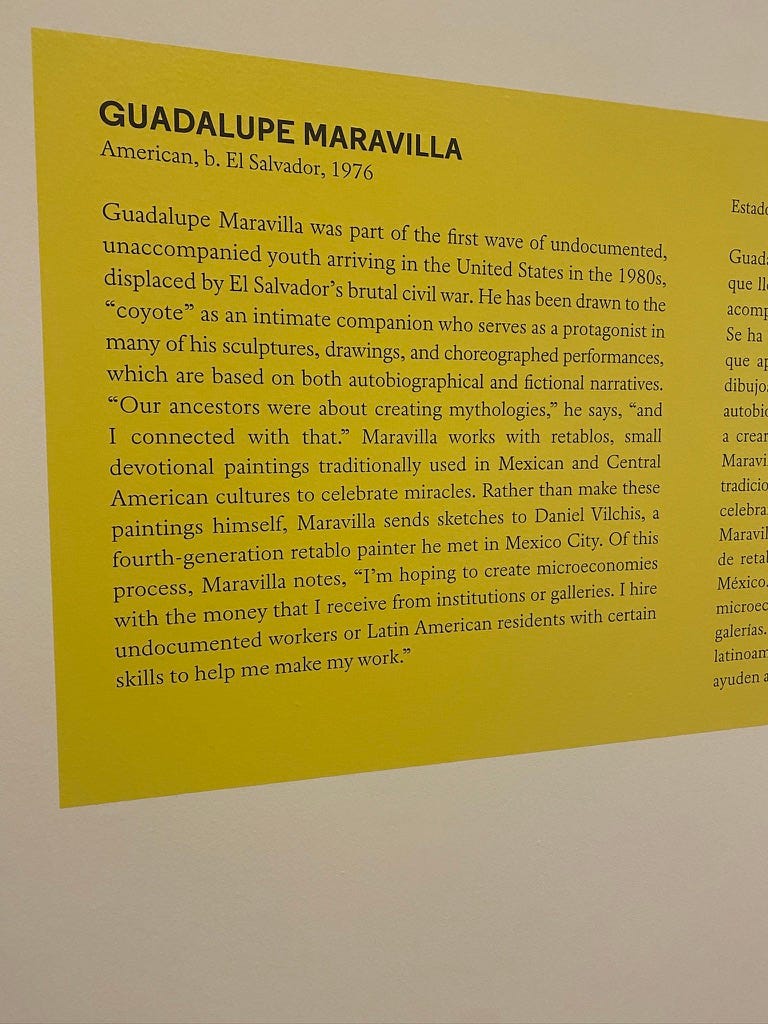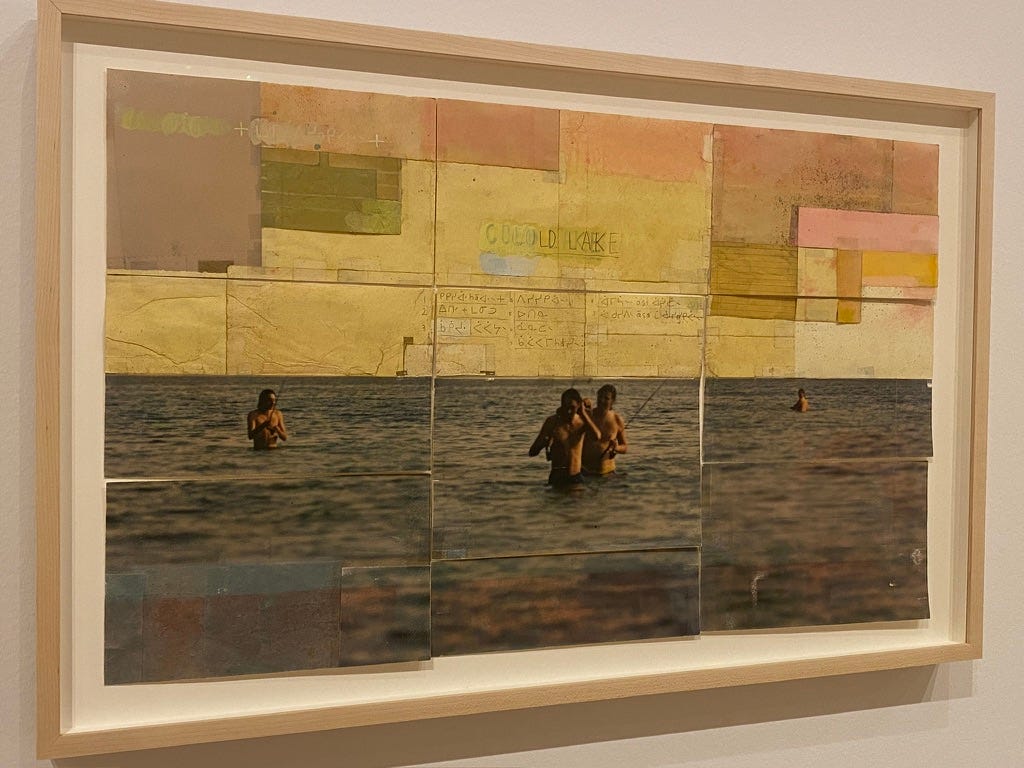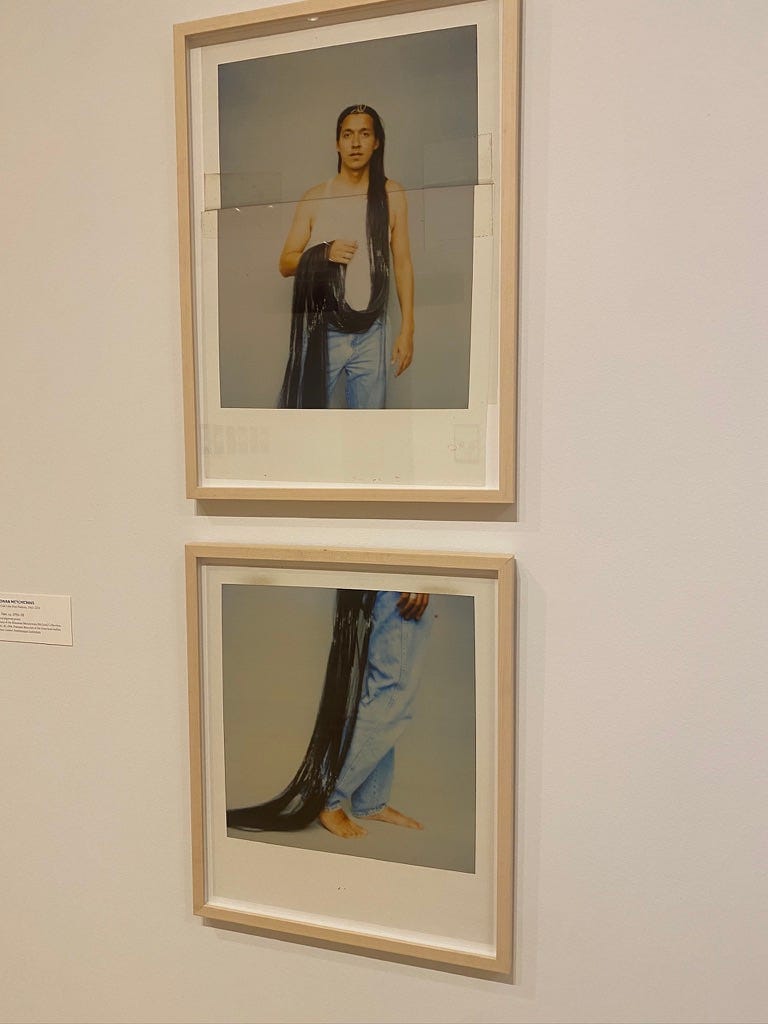A new exhibit at the Blanton has opened. After meeting my Sunday coffee quota I moseyed on down to give it a look-see.
Wendy Red Star, an artist of Crow decent, has curated an exhibit that showcases artists indigenous to North America. Native America: In Translation touches on themes of identity and place. The show is about existing as an Other in your ancestral home but it remains relatable and universal.
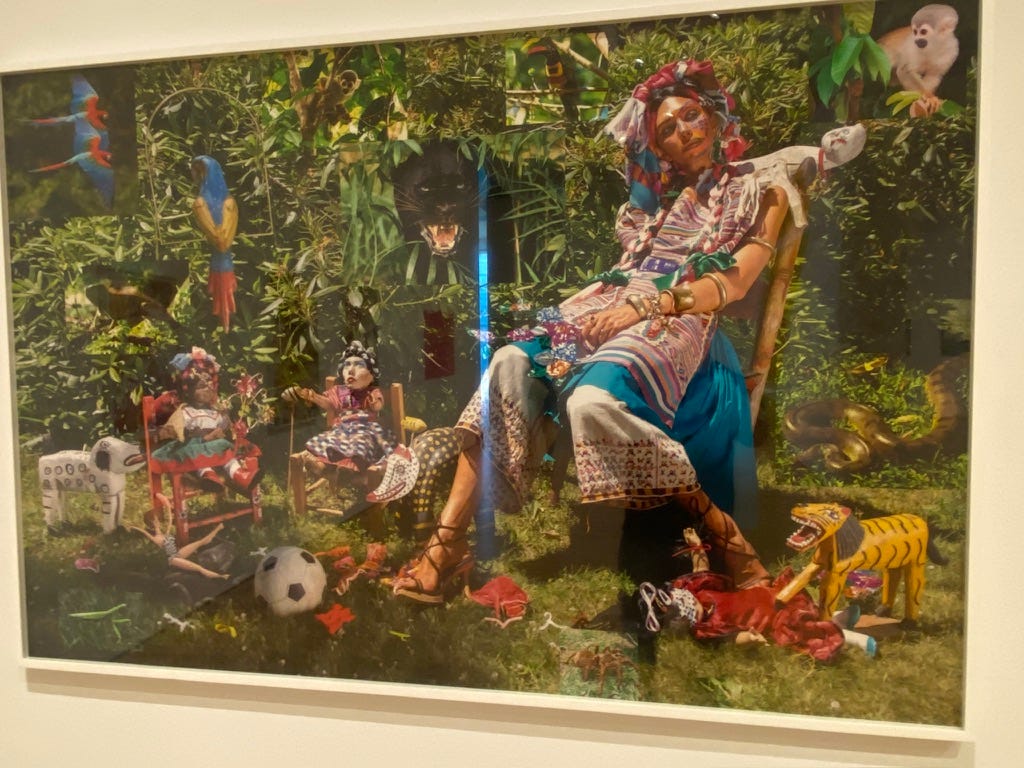
In 2018 Martine Gutierrez, an American of Mayan heritage, created an issue of her own fashion magazine. Her portion of the show is drawn from this project. Not unlike a run of Vogue, the images she produced are glossy prints of well manicured models (all of whom are Gutierrez) staged, seemingly, to sell a look or a product. The photos, however, are an examination of native stereotypes and common tropes among Latin Americans. The images walk the thin wire between serious and satire. It’s a send-up of the viewer’s own presuppositions.
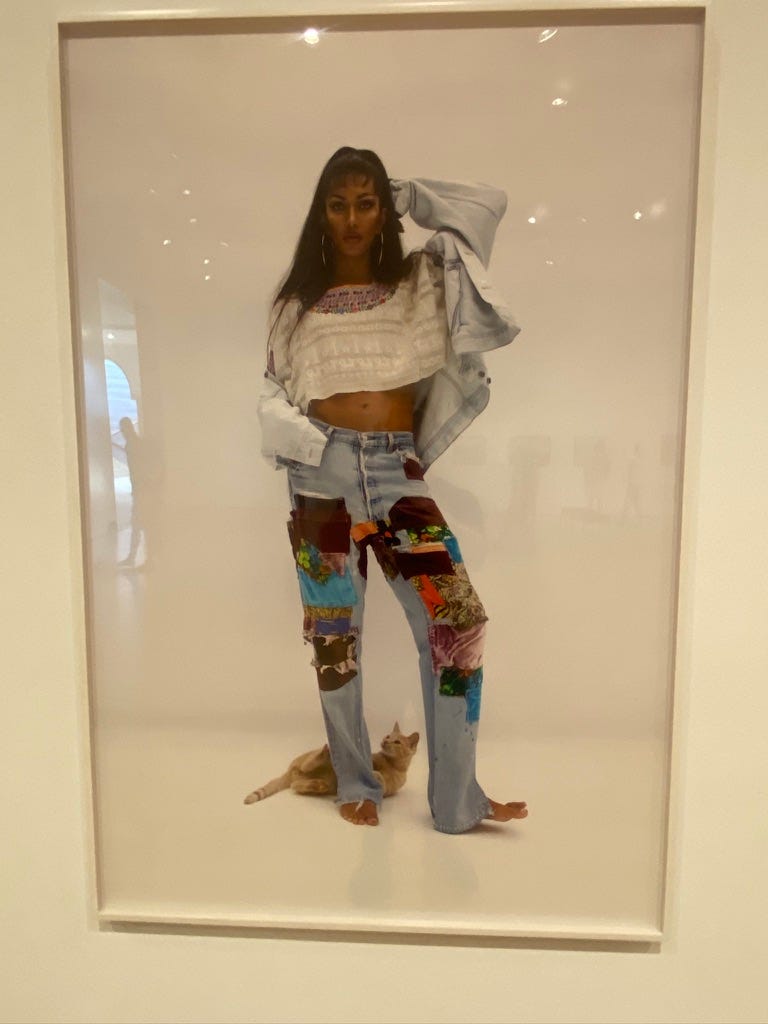
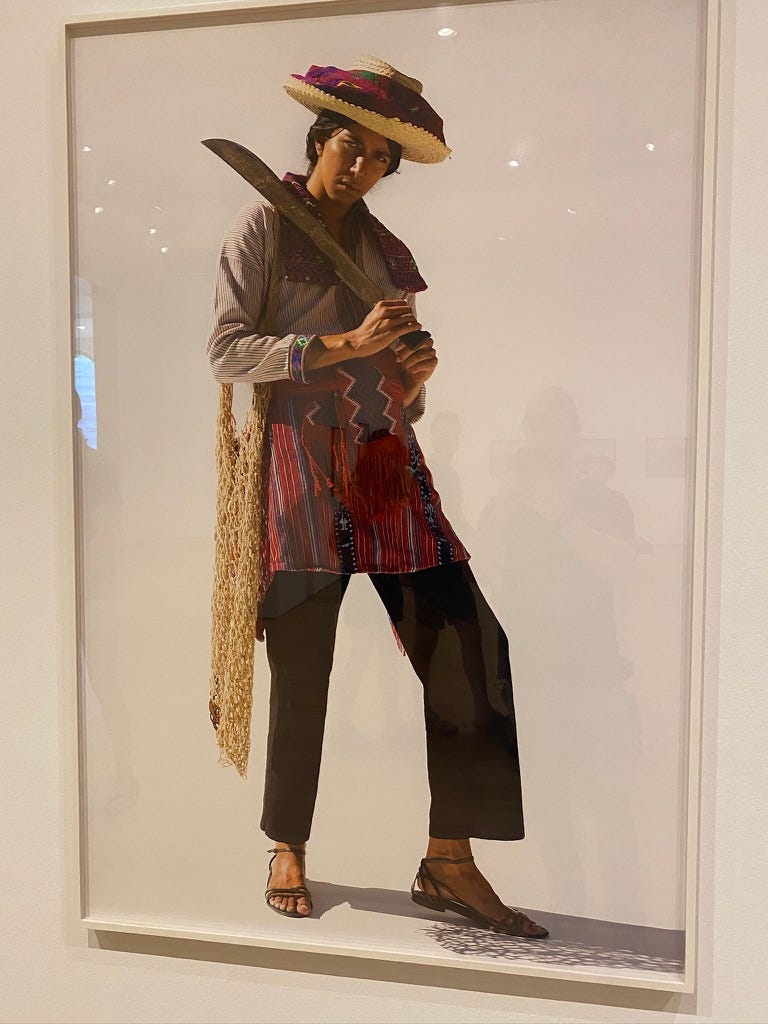
Work about identity - about someone’s race or religion or queerness or otherness - often fall into the unfortunate valley of isolation and alienation. I want to relate to the artist and understand their point of view. Gutierrez and the other creators on display deftly avoid the trap of exclusion. Their exploration is not simply about what it is to be an ancestor of an indigenous person but about what it is to reckon with a history that no longer has any bearing on your modern self. I do not know what it is like to be a queer person of color when all of my forefathers were indentured servants or sharecroppers or Native Americans relegated to life on a reservation the size of a postage stamp. But there is something to the idea that I am, we are, people apart from what came before. The Human Condition™ persists, yes. I, like my fathers before me, experience loneliness and lust and compassion and curiosity but the world is, undoubtedly, different. Connected. Faster. And despite my heteronormative suburban privilege the questions posed by the men and women here struck a chord. How does where I come from influence who I am now?
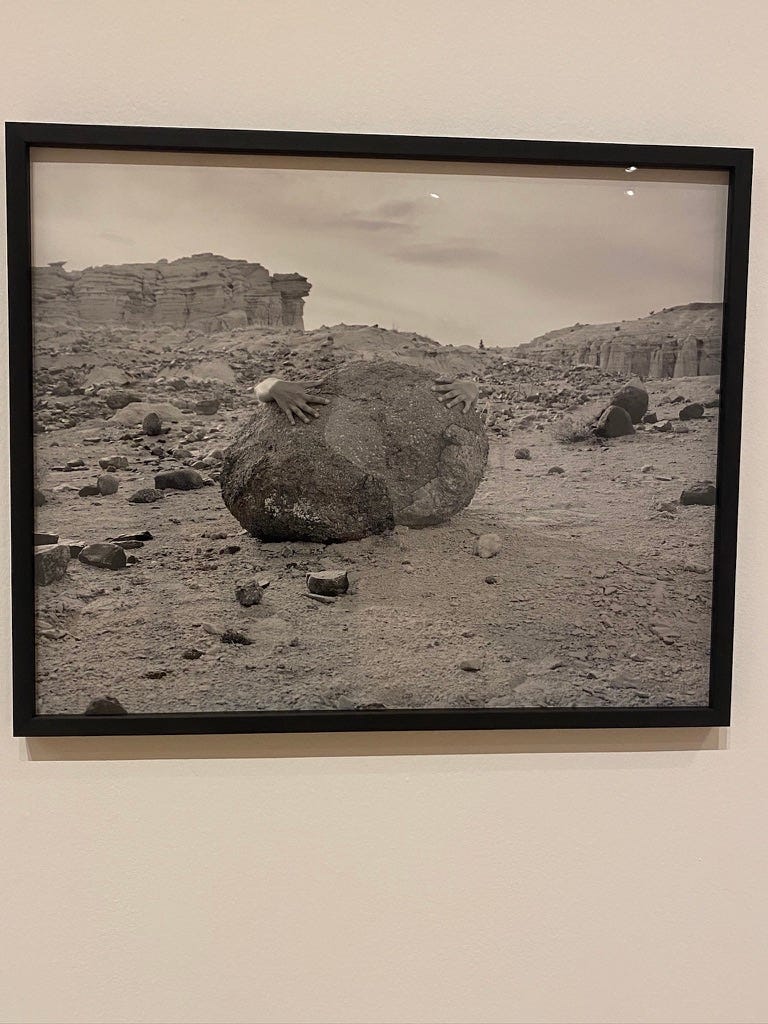
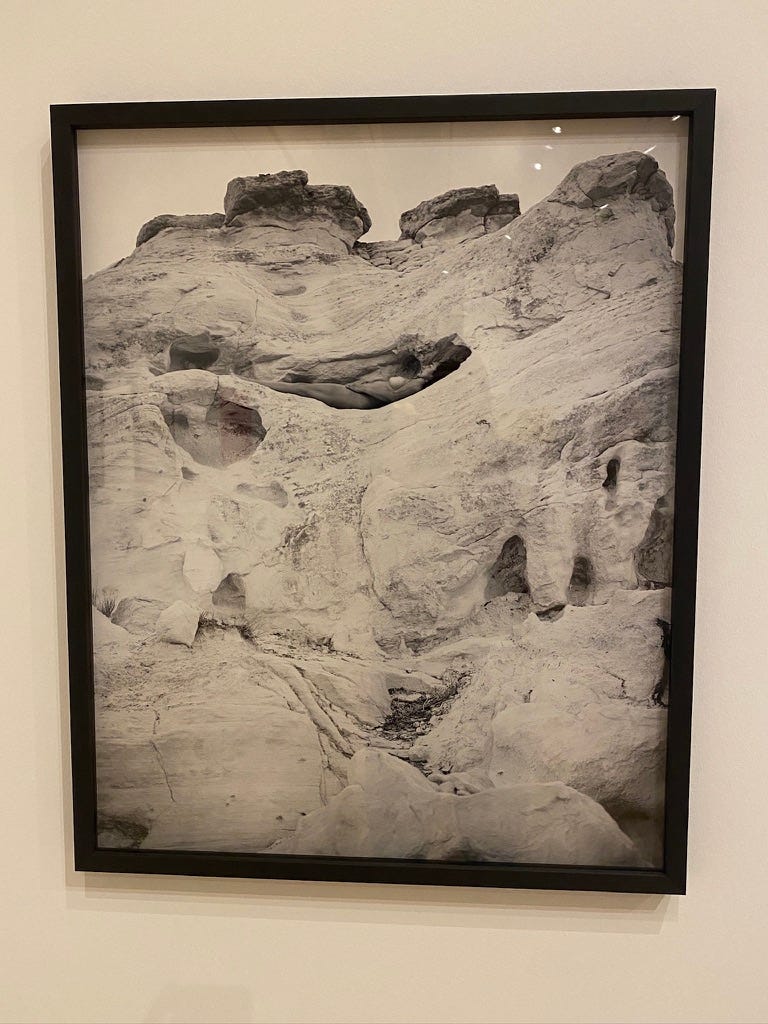
One way to ensure the audience is not going to be ostracized from an artist’s work is if the work is original. Have I seen any of these images before? Are the shapes and colors and use of space and the placement of the objects laid out in ways that I have not seen? How often do you watch a movie or show and think, “I’ve heard this story.” Forms are repeatable and anyone can steal from their influences to create something new but is it original? Does the piece find a truth that is greater than the sum of its parts? A woman in drag in a fashion magazine or black and white shots of nudes in the desert might not be new images but their impetus sets them apart.
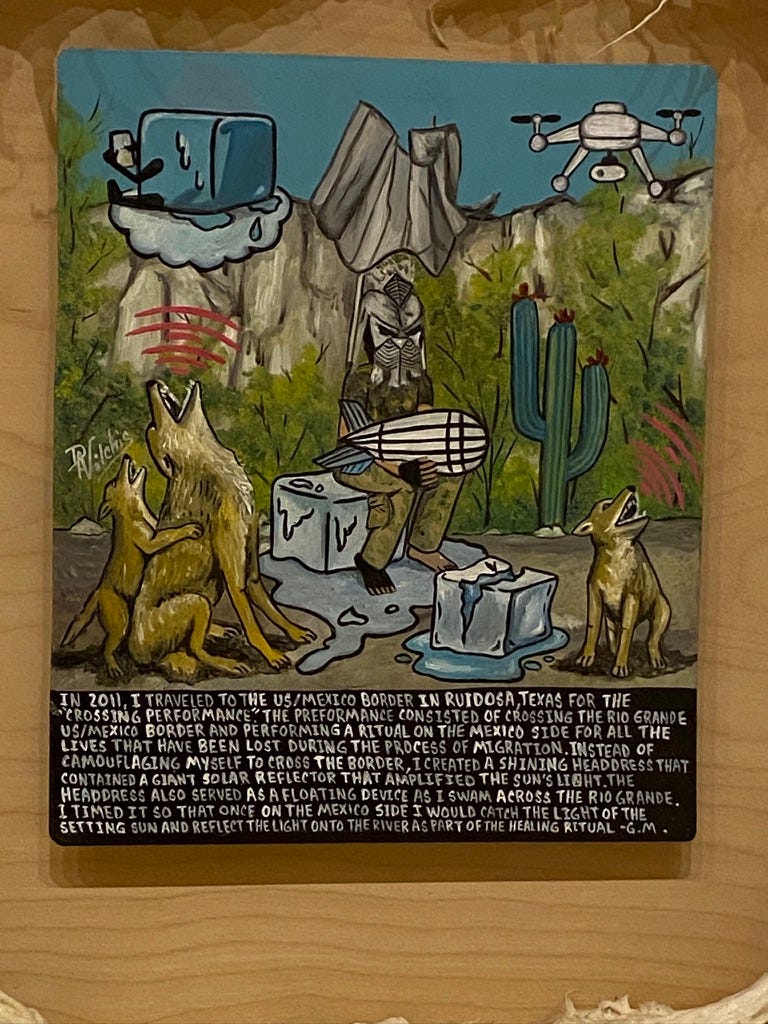
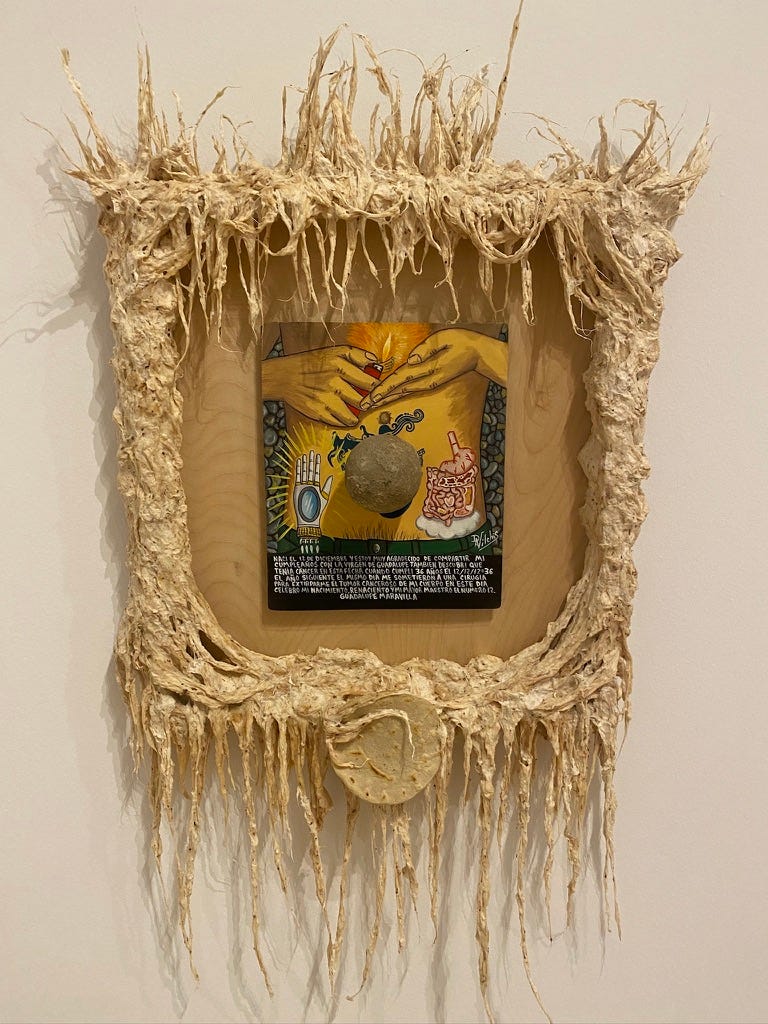
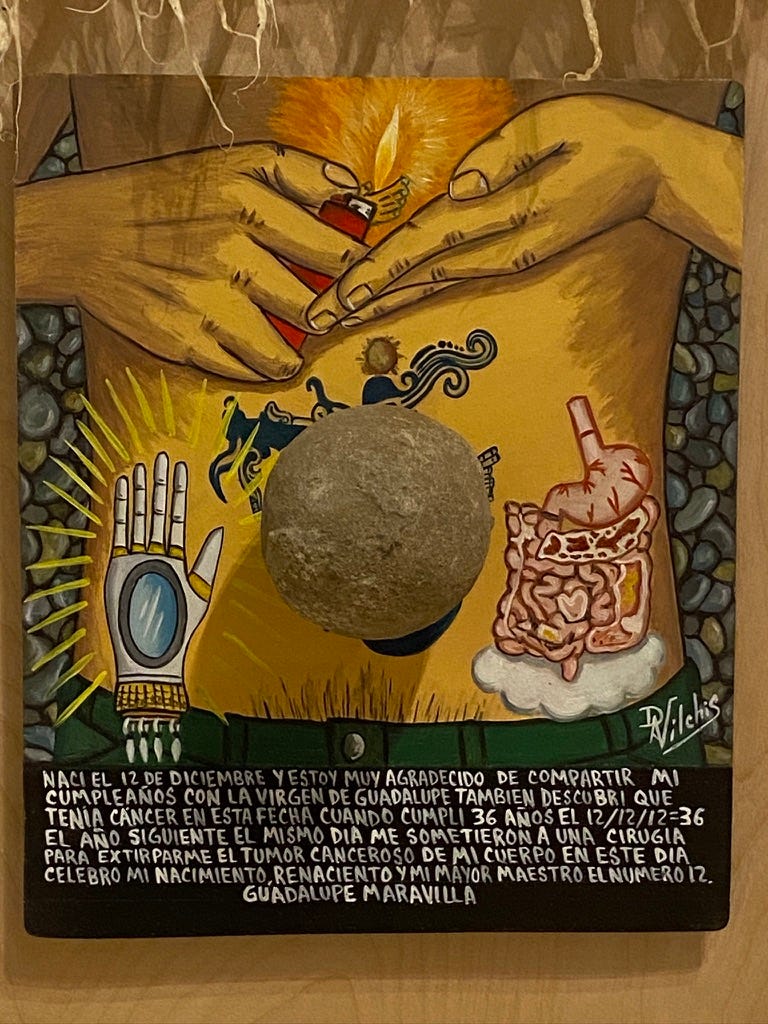
Truth be told Maravilla’s work is just as compelling for the right reasons as it is for my made up ones. I do not understand borders. The frontier existed before language. Rivers and mountains are indifferent to humanity. No one should own the land. But order, it could be argued, must be maintained.
Metchewais did not consider himself a photographer but rather "a sculptor of flat, rectangular objects of various textures and tone." A slideshow in his portion of the exhibit projected countless polaroids he had taken of plants, landscapes, small items he had fashioned out of everyday items, signs, words and portraits. I stood and gazed for twenty minutes and saw no repeats. The above collage is of him and his brother taken at different times by the boys’ mother from the shore. Something about the bond and the joy captured in these moments caught me like nothing else at the museum that day. Metchewais is also the only deceased artist on display. Distant but personal, anonymous but poignant, old but timeless. This work is simple - like the work of any master - but it’s impact is immeasurable. It takes a life to say so much with so little.
Most of the time, I do not think I can live up to the expectations of the generations that came before me. I am unfulfilled potential. Were I asked to add something to this exhibit, that would be the theme that I grappled with. I’m not sure what my ancestors dreamed for me. I do not know what I would dream for a child of my own. Perhaps if I contributed in some way to this mosaic of artists that would be enough. Today I merely beheld them. That must suffice.




